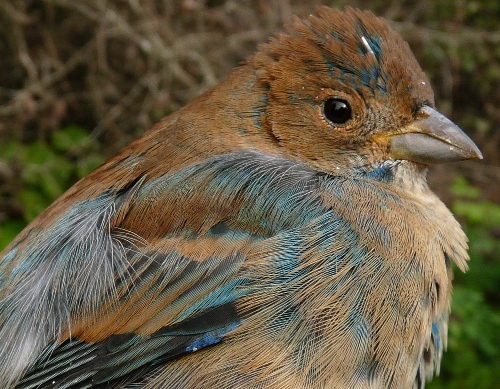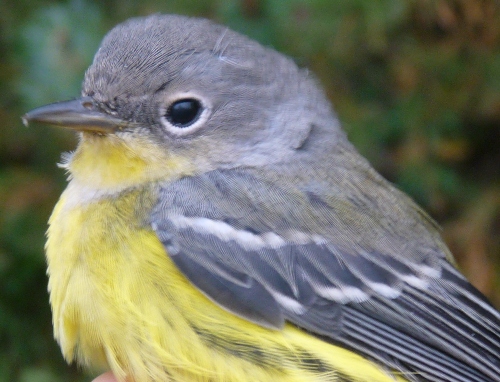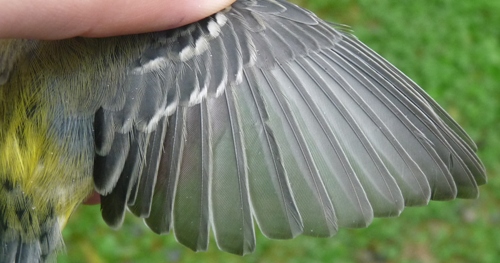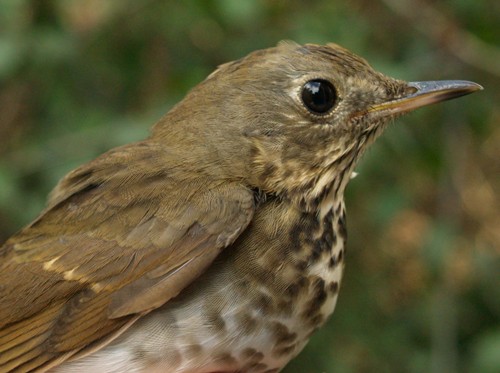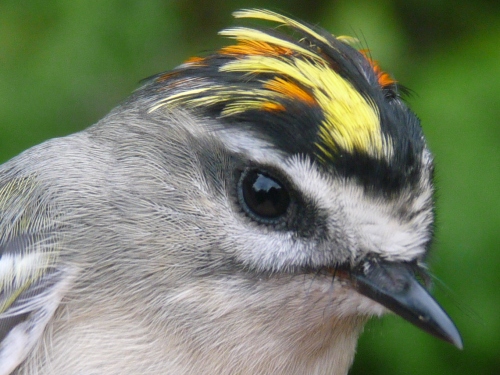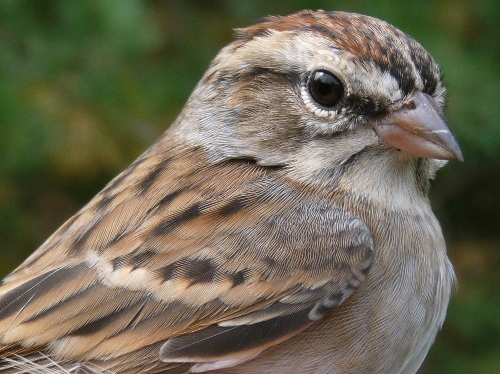|
McGILL BIRD OBSERVATORY |
||||||||||||||||||||||||||||||||||||||||||||||||||||||||||||||||||||||
Welcome
to the McGill Bird Observatory weekly report.
Click here for a complete listing of our archives.
Banders-in-charge: Bob Barnhurst, Simon Duval, Marcel Gahbauer, Gay Gruner Notes: It was another remarkably quiet week at MBO. In fact, although it was our best weekly total so far this fall, the 321 birds banded this week was just above our previous lowest count for week 9 (311 in 2007), and well below the six-year average of 634, let alone the record of 1113 in 2008. Weather was somewhat of a factor this week, as a major low pressure system moved in from the Atlantic, and conditions were unsettled throughout the week. However, we were still able to operate daily and overall only lost 10% of our potential net hours to rain. The bigger issue was that the abundance of birds on site was a fraction of what we usually observe at this time of year. We can only hope that migration will improve once this weather system moves on.
Like last week, the low abundance of birds was offset by above average diversity - in fact the 81 species observed was a new record for week 9. Remarkably, after going 14 months without adding any new species ot the MBO checklist, this week we added our second in two weeks, thanks to the sharp eyes of Steve Dumont, who spotted a Common Goldeneye flying over on Saturday morning. We also observed American Black Duck, Bicknell's Thrush, and American Pipit for the first time this year, and Snow Goose, Great Black-backed Gull, Peregrine Falcon, Marsh Wren, and Hermit Thrush for the first time this fall, raising the season total to 132, tying the record for this time of year, set in 2007. We banded our first Bicknell's Thrush since 2008, our first Winter Wren, Hermit Thrush, and Orange-crowned Warbler this year, and our first White-crowned Sparrow and Slate-colored Junco this fall. We also had our first Blue Jay return of 2011.
Finally this week there was a substantial change in the birds on site, likely related to the substantial change in weather associated with a large low pressure system that arrived early in the week and lingered throughout. After dominating the list of birds banded for the past five weeks straight, Magnolia Warbler dropped right off this week, as only five individuals were banded. Instead, the usual suspects for week 9 took over the top four spots. Ruby-crowned Kinglet has been the runner-up in week 9 in five of the previous six years (and third place in 2008), so this marks the first time it has taken top spot so early in the season. During the same period, White-throated Sparrow has been first three times and also third three times, and this year takes second place. Yellow-rumped Warbler was down substantially from last year's count of 750 during the same week, but the 33 individuals banded and third place ranking this week are actually both record highs for an "odd" year. Except for last year, Song Sparrow has always been in the top six for week 9, so the fourth place ranking is no surprise. On the other hand, the 20 Golden-crowned Kinglets is the third highest single-week total ever at MBO, and the first time we've had that many so early in fall. Tennessee Warblers dropped to seventh place this week, but were still banded in surprisingly good numbers, and Chipping Sparrows were unusually common for a second straight week. Blue Jay is a rare visitor to the top ten for banding, and snuck in thanks to a ninth place tie with Gray Catbird. In addition to Magnolia Warbler, the other species falling out of the top ten from last week were Blackpoll Warbler and Common Yellowthroat. Canada Goose dominated the list of species observed this week by a wide margin, which is the norm for week 9 - although the count was especially high thanks to a record flight of 10,300 individuals on the morning of October 1 (a seemingly never-ending stream of high-flying geese that had us keeping our eyes glued to the sky). Red-winged Blackbird in second place was more of a surprise, as it has only been in the top ten for week 9 in three of the previous six years, and never ranked as high as this. American Robin was also unusually abundant for this early in fall, while White-throated Sparrow remained much less numerous than usual. Three new entries at the bottom of the list included an early movement of Greater Snow Geese, as well as Ruby-crowned Kinglet and Yellow-rumped Warbler; they displaced Ring-billed Gull, European Starling, and Cedar Waxwing from last week's list.
Finally, it's worth noting that this week marked the resumption of our Northern Saw-whet Owl banding program. Pleased with the success of last year's expanded effort, we again plan to operate the program nightly for six weeks from September 26 through November 6, except for when rain or high winds make conditions unsuitable. Our first week was a quiet one, with three nights lost to weather, and another without any captures. One saw-whet was caught on each of the remaining three nights - two of them "new" birds, and one a recapture banded here on October 2 last fall. Conveniently, that was one of the owls that was "adopted" last fall, so we were able to inform the happy "foster parent" that her owl is alive and well a year later, and still showing an affinity for MBO. We will again be offering up owls for adoption this fall - please check out our Adopt-an-owl page for details on this program.
|

